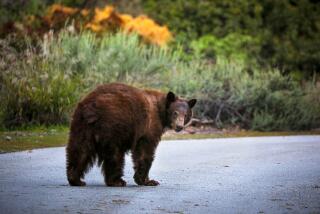Fishermen Dispute Herring Quota
MARSHALL, Calif. — Ernie Koepf, a commercial fisherman, is unhappy about what he considers this year’s skimpy herring quota and shortened fishing season for San Francisco Bay.
Chris Lawson, another fisherman, is frustrated with state regulations that force him to stop fishing for herring on Tomales Bay on weekends.
San Francisco and Tomales bays constitute the largest herring fisheries in the state. The only other places in California where herring can be caught commercially, and in much smaller amounts, are Humboldt Bay and Crescent City Harbor.
Lawson and Koepf said they would discuss these issues and more in the spring, when the fishermen, along with fish buyers, will meet with state Department of Fish and Game officials. It is an annual meeting to discuss the past fishing season and plan for the following year.
The herring season in San Francisco Bay came to a close Feb. 13, a month earlier than usual due to fish and game officials’ concerns about what they perceive as a declining herring population. Herring season in Tomales Bay, a much smaller body of water in Marin County, ends in March.
Koepf, president of the California Herring Fisheries Assn., which represents 147 fishermen on San Francisco Bay, disagrees that the population is decreasing.
“I say it’s rebounding right now under their nose,” Koepf said. “It started last year and it just came on strong this year.”
Each year, herring come into the bays from the ocean to spawn. Fishermen lay out their nets to catch the fish just before they release their eggs. The only market for the roe is Japan, which buys it as a delicacy. The fish themselves are turned into animal feed.
Fishermen and herring buyers say the price the roe fetches depends largely on the Japanese economy. The roe is selling for $500 a ton this year, down from a high of $2,200 a ton in 1996.
Still, fishermen say they can gross $30,000 to $40,000 for about two months of work, although they’ll net about half of that after costs for crew members, fuel and permits.
Perhaps the biggest controversy this year is over the quota allowed for San Francisco Bay and the method for estimating the total herring population.
The quota, which is set by the fish and game department each year based on the previous year’s total estimated herring population, generally ranges from 10% to 15% of the total population.
Koepf, 52, of Half Moon Bay, has been fishing since 1971. He said the quota should have been 4,000 tons.
Instead, it was set at a maximum of 2,200 tons.
“There’s a huge return [of fish],” Koepf said. “A lot of fish, big fish, old fish, healthy fish, a good representation” of different ages.
In other years, he said, officials arrived at the population estimate by taking into account results from two types of surveys -- one using sonar equipment on boats to measure schools of herring passing underneath and the other by collecting samples of roe deposits.
In the second method, a two-member fish and game team traveling along the shoreline during low tide in a skiff rakes up samples of vegetation with the sticky egg sacs attached to determine the extent of the spawn.
For the first time this year, only the egg roe deposition method was used to determine the total estimated population, said Becky Ota, senior biologist and herring state manager for the fish and game department in Belmont.
She said her staff felt uncomfortable using results from both methods to come up with a total population figure because there was such a great disparity between them.
Alex MacCall, a fisheries biologist with the National Marine Fisheries Service in Santa Cruz who was part of a panel assessing fish and game’s population-estimating methods, said his panel concluded that the spawning surveys were more accurate.
Koepf hopes to counter what he believes are gross underestimations of the fish population by collecting egg deposits himself with other fishermen and recording what they find.
“If there’s any sort of vague misinformation, we can consult our log,” Koepf said.
“If we run into trouble again, we can go to the [fish and game] commission and say, ‘Look, here’s our log. Here’s what we got.’ ”
But Ota said for the sampling to be meaningful, it has to be done methodically.
“If they give us samples, we’ll take them,” she said. “So far this year, all the spots they’ve been, we’ve already been there.”
Koepf said the fishermen and the state agency need to come to agreement.
“Let’s just say a balance needs to be struck so the resource is sustainable and the fishery is viable,” he said.
More to Read
Sign up for Essential California
The most important California stories and recommendations in your inbox every morning.
You may occasionally receive promotional content from the Los Angeles Times.










